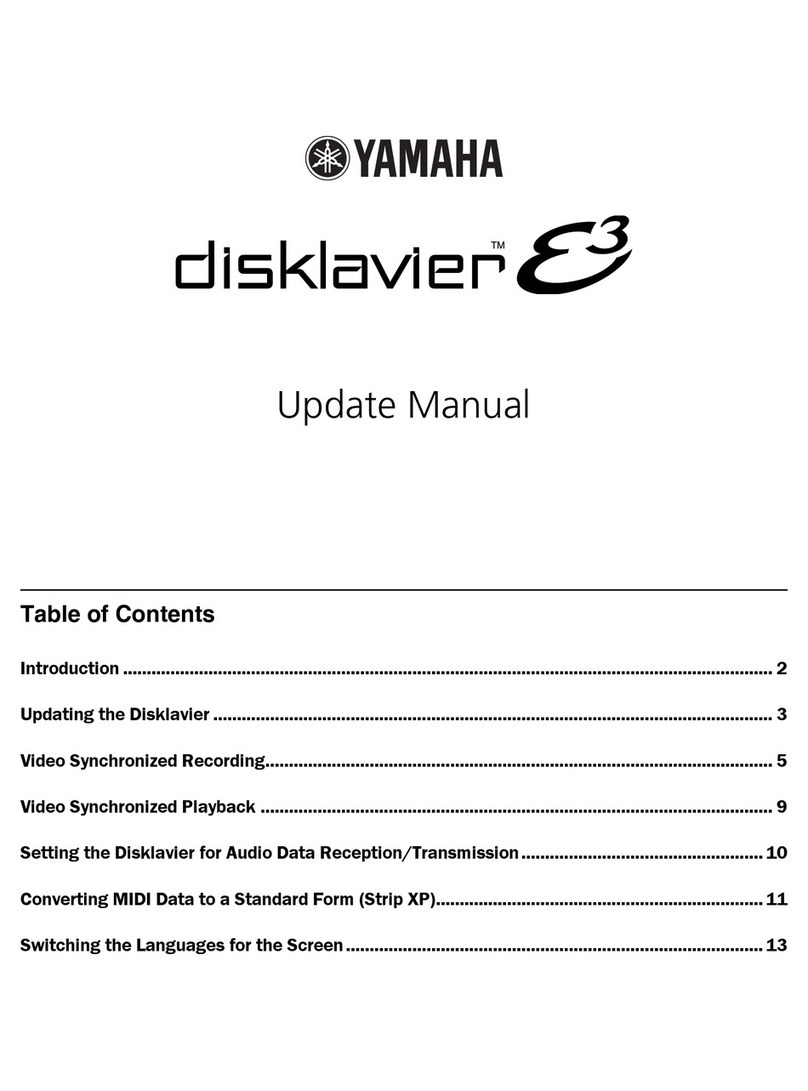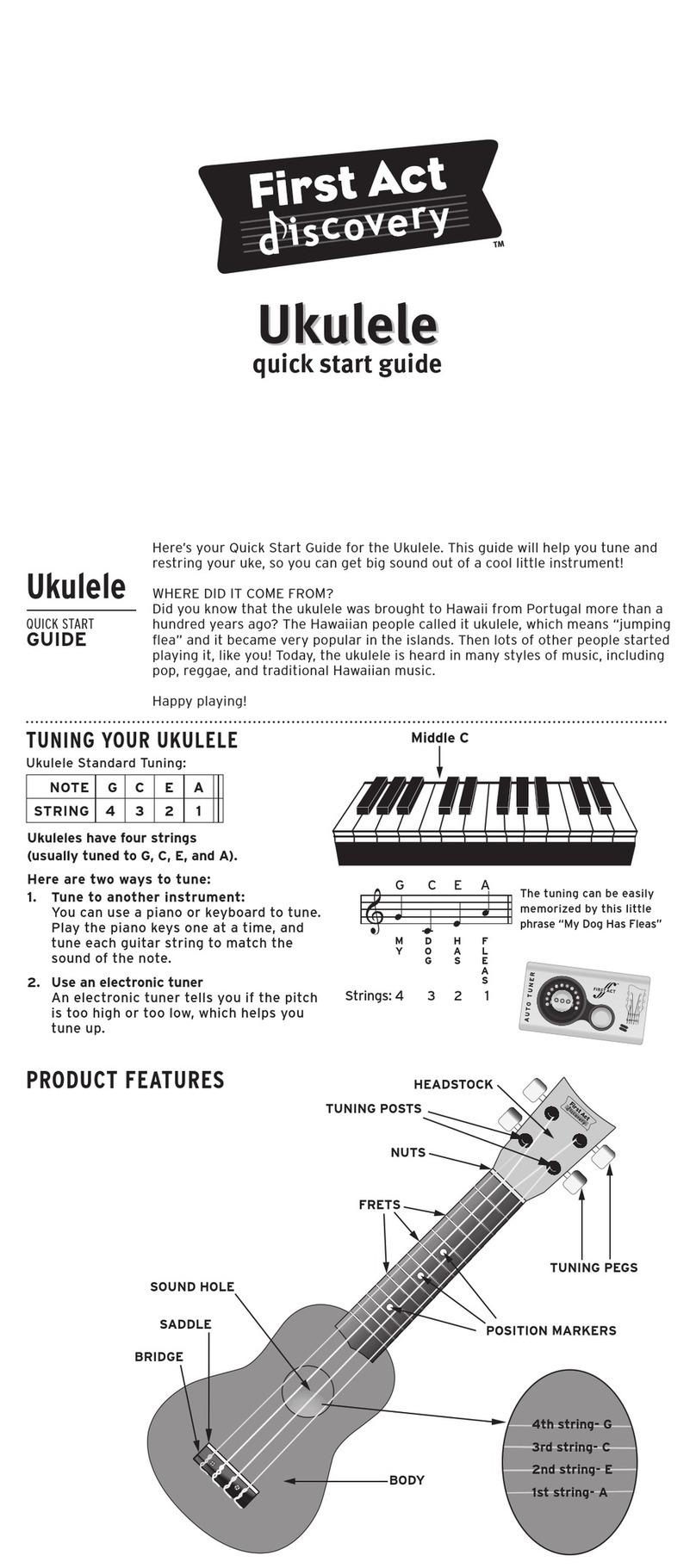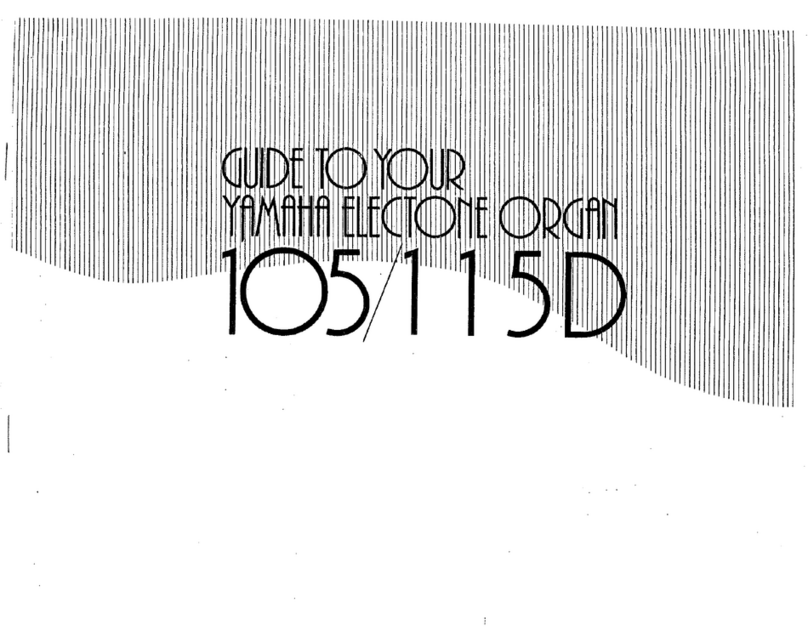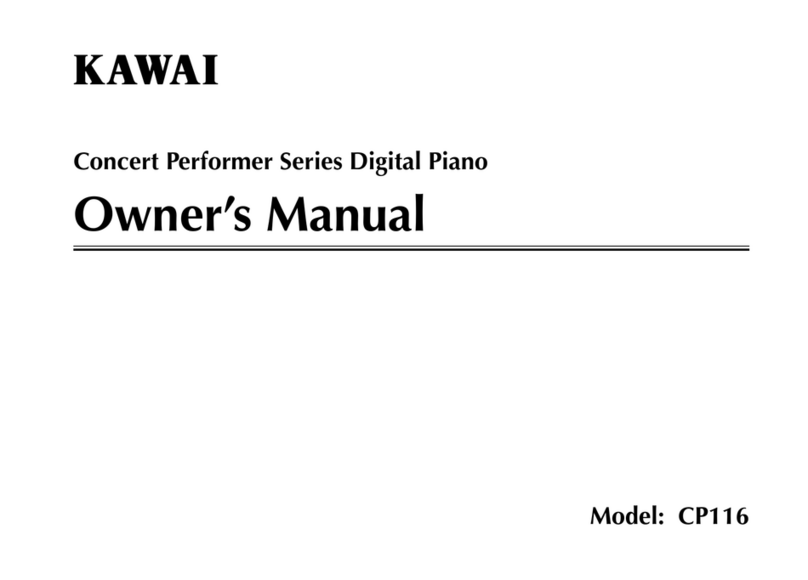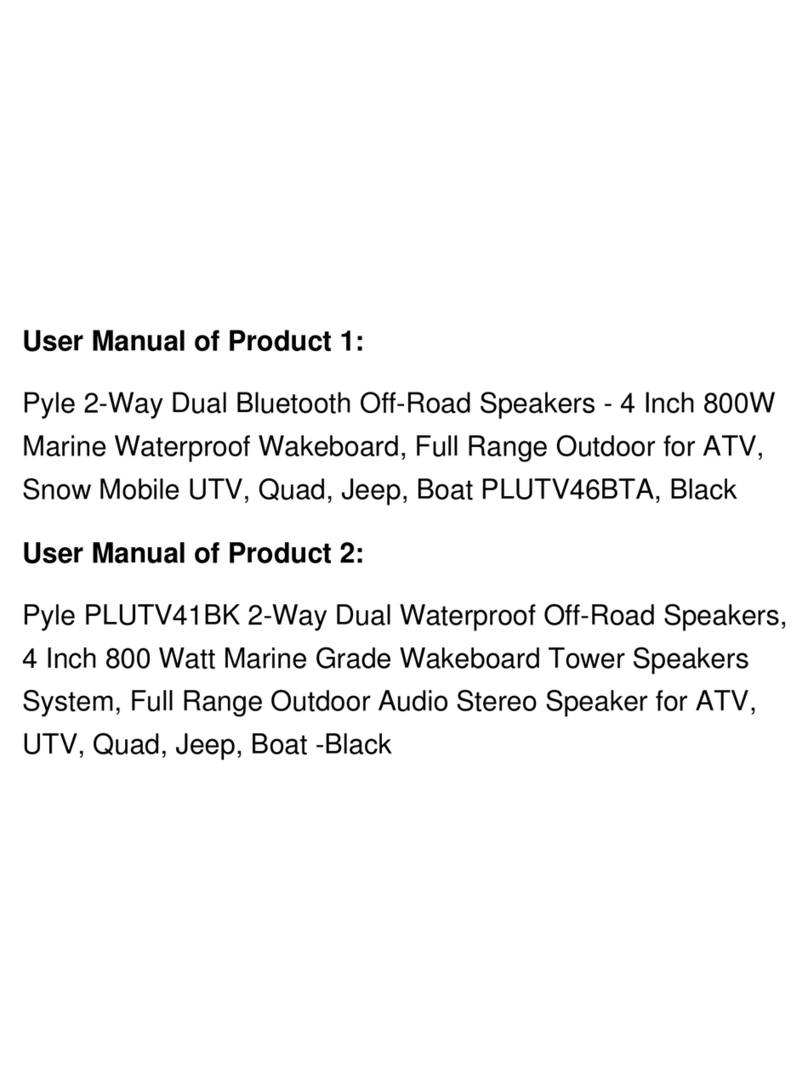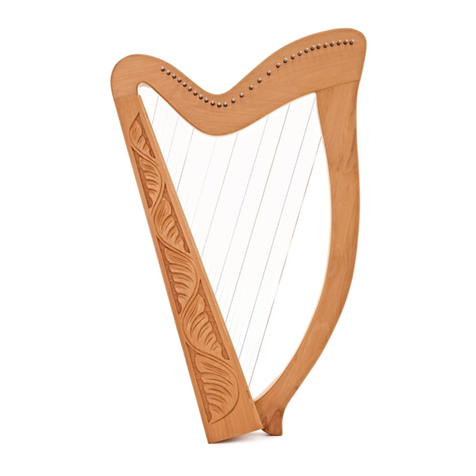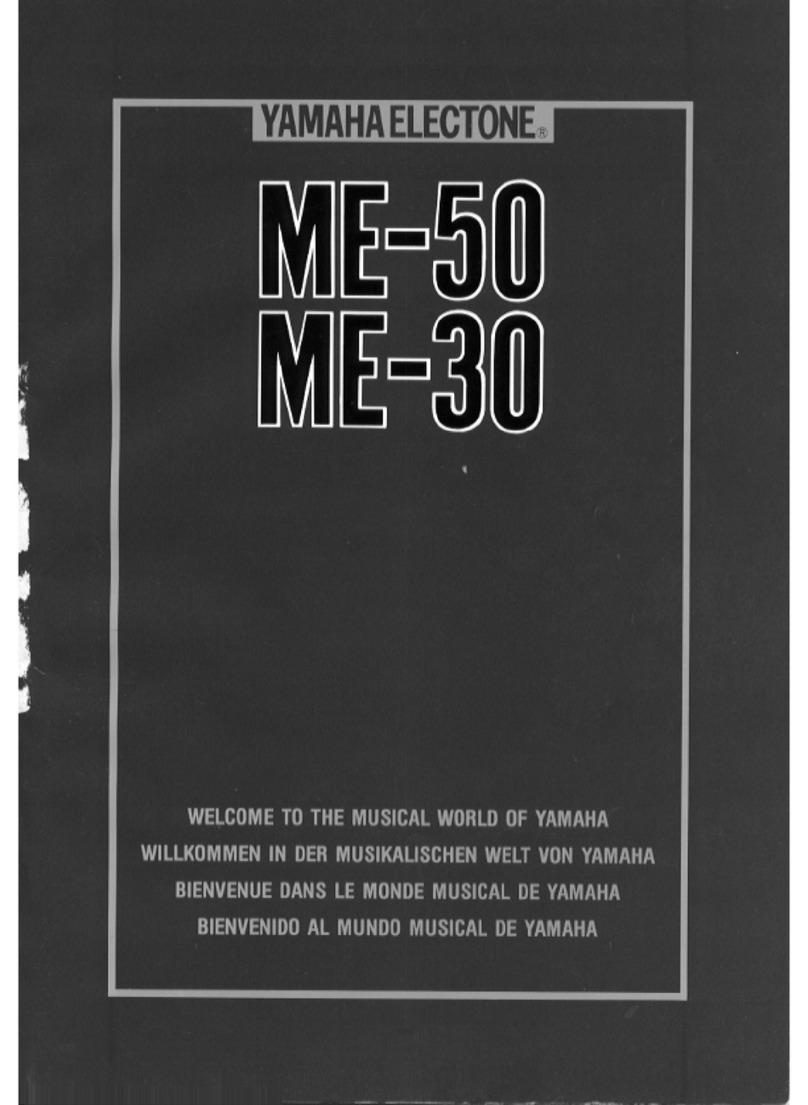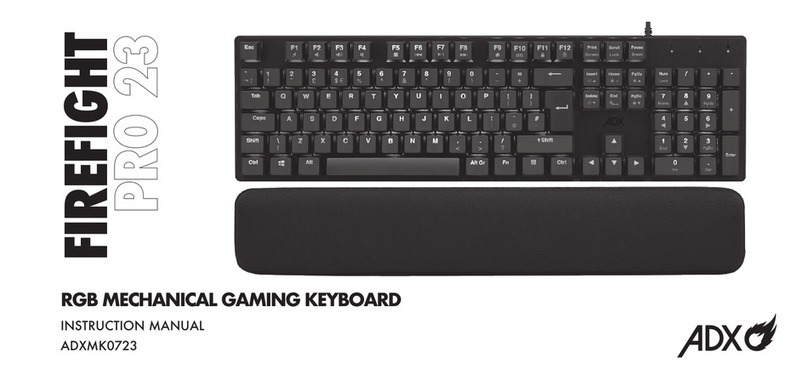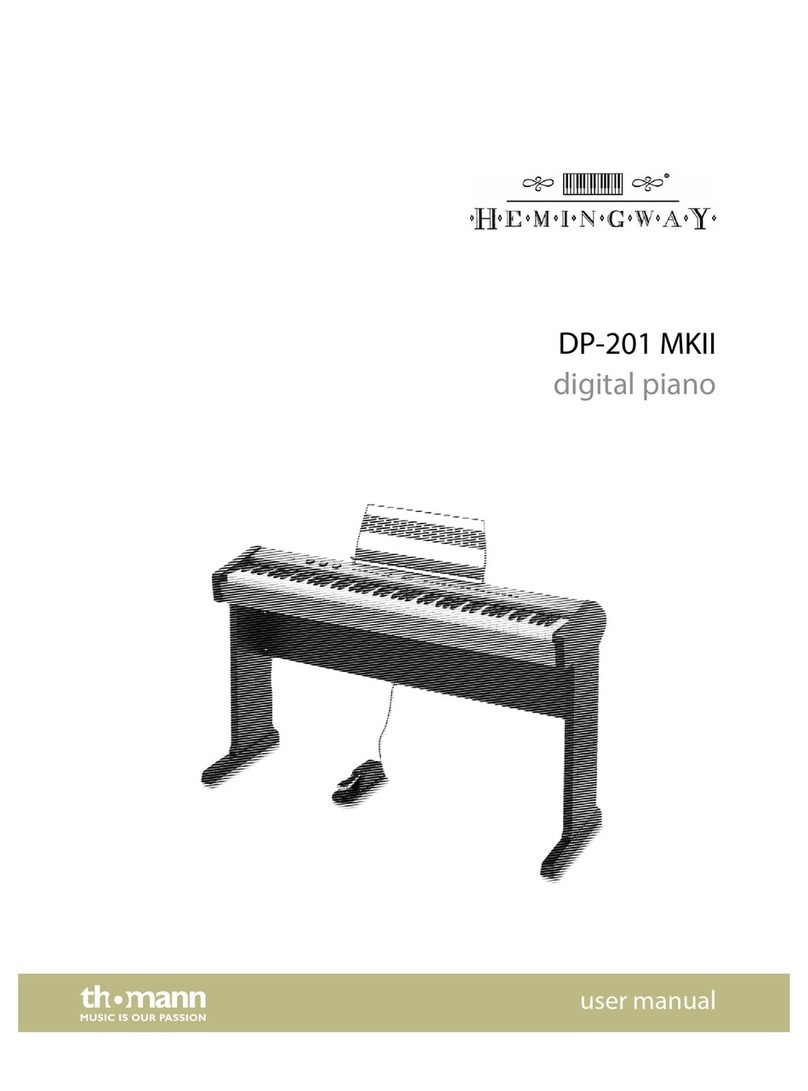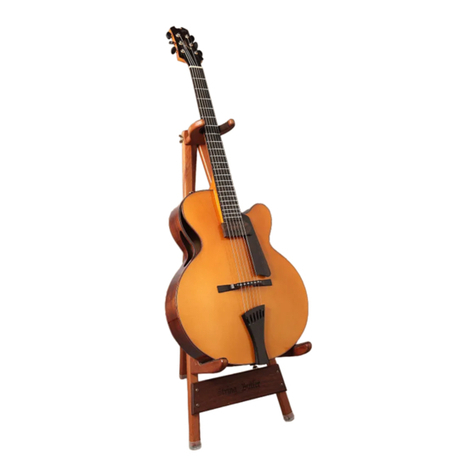Girard Guitars G-BASS Alpha User manual

Girard Guitars Augsburg Germany
G-BASS Owner Manual V1.0 2017
1
Congratulations on your new purchase and thanks for making Girard Guitars your
Bass Guitar instrument choice!
All Girard Guitar Bass instruments are covered by our limited warranty.
Please read carefully this manual.
With some simple precautions your Girard Guitars Bass will provide you satisfaction.
In This Manual is described how to use and maintain properly your instrument.
CONTENTS:
Bass guitar Description. . . . . . . . . . . . . . . . . . . . . . . . . . . . . . . . . . . . . . . . . . . . . . . . . . . . . . . . . . . . .2
GENERAL MAINTENANCE . . . . . . . . . . . . . . . . . . . . . . . . . . . . . . . . . . . . . . . . . . . . . . . . . . . . . . . . . ..3
TUNING YOUR Bass . . . . . . . . . . . . . . . . . . . . . . . . . . . . . . . . . . . . . . . . . . . . . . . . . . . . . . . . . . . . . .5
GIRARD GUITARS LIMITED WARRANTY . . . . . . . . . . . . . . . . . . . . . . . . . . . . . . . . . . . . . . . . . . . . . . 11

Girard Guitars Augsburg Germany
G-BASS Owner Manual V1.0 2017
2
GIRARD GUITARS
O W N E R ’ S M A N U A L & W A R R A N T Y I N F O R M A T I O N
BASS GUITAR Description
1. Tuning keys
2. Truss Rod Cover
3. Neck
4. Body
5. Neck Pickup
6. Bridge Pickup
7. Controls
8. Battery compartment
9. Bridge
10. Frets Markers
11. Poti Cover
12. Strap knob
1
2
3
4
5
6
7
10
9
12
12

Girard Guitars Augsburg Germany
G-BASS Owner Manual V1.0 2017
3
GENERAL MAINTENANCE
In Order to keep your instrument functioning properly some periodic care-and-maintenance
operations are necessary.
Below are listed some all the operations that can be done by the owner.
In case special operations are needed please contact Girard Guitars.
Initial set up has been performed by Girard Guitars such as Pickup height, Neck adjustment
and strings height.
As every musician has its own preferred settings, please follow the instructions in this
manual how to adjust the settings to your preference.
Cleaning
cleaning your guitar after each use will preserve the finishing.
Make sure to wipe the fingerboard and strings as well as any of the metallic parts such as
tuners, pickups, bridge etc.
Make sure to remove all perspiration, as it can lead to corrosion and rusting in metal
hardware and strings.
Use a cotton cloth using any other type of cloth will most likely scratch the finish on your
instrument. Do not use any solvents or abrasive cleaners! To clean a satin finish, use a dry
8
11
12

Girard Guitars Augsburg Germany
G-BASS Owner Manual V1.0 2017
4
cloth and simply wipe lightly to remove any dust or build-up.
Accessories
Accessories such as straps, guitar holder and stands may scratch the bass guitar therefore be
careful with use of such accessories.
Guitar straps knobs are dimensioned according to normal use.
Any overload of such parts may result in braking of the fixing screws and damaging of the
body woods.
Any damage caused by overloading a strap Knob or damage caused from changing your strap
knobs will not be covered by the Girard Guitars warranty.
Fingerboards
Ebony fingerboards contain natural oils that may dry out over time. Sharp or protruding
fret edges as well as a lighter appearance in the color of the fingerboard may be indications
of dry wood.
In either case, you may restore the wood to its original luster and prevent It from drying out
by applying ome lemon oil periodically. Remove all the strings, then apply a small amount of
the oil to a clean fat-free cloth. Rub the oil into the entire fingerboard (only a small amount
is needed). Wipe the fingerboard
immediately to remove excess oil using a clean lint-free dry cloth.
Storage
When not playing you Bass guitar we recommend you to store your instrument in a proper
instrument bag or better hard case.
If you plan not to use your Bass Guitar for a long period or for travelling issues where climate
changes are notable we suggest you to loosen the strings a bit in order to releive some
tension on the neck.
1 or 2 turns of the tuning keys are sufficient.
Always store your instrument at room temperature, do not expose to sun or extreme cold
for long period.
Do not leave your instrument in a hot or cold car or trunk–This will result in damage of your
Bass Guitar Damage to your instrument caused by neglecting or subjecting your instrument
to extreme temperatures
will not be covered under the Girard Guitars limited warranty.

Girard Guitars Augsburg Germany
G-BASS Owner Manual V1.0 2017
5
TUNING YOUR BASS
To tune your instrument act on the tuning keys on the head neck (on body for headless
instruments).
When replacing strings we recommend you to replace the strings one at a time in order to
not relieve at all the tension on the neck.
Old strings may have some corrosions spots that may damage the frets on the body,
therefore we suggest you to check the status of your strings and change them as necessary.
Factory and recommended strings:
Bass
String Gauge
Tuning low to high
4 string
105/80/65/45
E/A/D/G
4 string
95/75/60/40
E/A/D/G
Stringing Your Guitar or Bass
When changing the strings with a same gauge or changing the gauge of the strings some
settings need to be checked:
Before removing/changing the strings check the height of the single strings at the 12th fret.
This distance is from the top of the fret to the bottom of the string. (Write these values
down on a paper).
To measure this distance you could use the gauge scale or a simple measuring device.
Normal values are between 2,0-2,8mm
After the strings have been changed re-check the height of the single strings at the 12th fret.
If the before and after values match you are ok if not adjust the height of the strings on the
bridge.
Changing the strings with the same gauge should not interfere with the neck adjustment but
generally using thicker or thinner strings may cause more or less tension on the neck and
therefore an adjustment of the truss rod may be necessary. (see Par. Adjusting the truss rod)
After adjusting the truss ro no-sound.
If this occurs you shall re-check the neck straightness and adjust if necessary or adjust the
height of the strings again until all notes sound clear.
Adjusting the NECK TRUSS ROD
All Girard Guitars Basses have an adjustable truss rod located inside of the neck. The
function of a truss rod is to
compensate the string tension on the neck.
Truss rod adjustment should be performed periodically in order to keep your guitar playing
properly.

Girard Guitars Augsburg Germany
G-BASS Owner Manual V1.0 2017
6
Setting
To set the truss rod, remove the truss rod cover on the neck head.
Insert the correct size Allen wrench (4mm)
Turn counter-clockwise to loosen and clockwise to tighten.
Truss rod adjustments should only be performed by a qualified technician. Improperly
adjusting or over adjusting the truss rod can result in damage to the neck and truss rod itself
especially when not using adequate tools and is not covered by the Girard Guitars warranty.
Checking Neck Bow
Correct truss rod adjustment is determined by the amount of bow or
relief that is in the neck. To check the proper setting follow this simple instruction:
Do the same operation for each string:
1. Press the string at the 12th fret.
2. With the 12th fret pressed check that the string from the 1st to the 11 fret is laying on
the frets or a minimal distance from strings to fret is available (0,1 mm max).
a. If too much and not constant space between string and frets are available
then the neck is concave and you need to tighten the Truss rod.
b. If the string lays on some frets and have some distance to other frets then the
neck is convex then the Truss rod needs to be loosen.
3. Un press at 12th fret and starting from 1st fret up to last fret play the strings.
4. If each note is clear and no buzzing is to hear you have setted correctly the neck
tension. If not check again from point 2.

Girard Guitars Augsburg Germany
G-BASS Owner Manual V1.0 2017
7
Truss Rod Cover

Girard Guitars Augsburg Germany
G-BASS Owner Manual V1.0 2017
8
Bridge intonation adjustment.
All Basses are factory adjusted to have the perfect intonation.
A bass is perfectly intonated when for example a string is tuned in its open position for
example 4th string in E and pressing the string at the 12th fret the string produces an E just 1
octave higher.
In case an intonation needs to be re-done follow the following steps:
1. Plug your Bass Guitar into a tuning device with a proper cable.
2. Tune up your bass with standard tuning E/A/D/G
3. Press the 12th fret of the 4th string at 12th fret result should be E if not act on the
screws of the bridge in Clockwise/counterclockwise direction until the open string
and the same string played on the 12th fret produce the same note (in this case an E)
4. Repeat step 3. For remaining strings.
PICKUP ADJUSTMENT
All pickups used in Girard Guitars Basses are adjustable. Raising or lowering a pickup will
increase or decrease the amount of output for that pickup. Pickup heights should be
adjusted so that both pickups are at about the same volume level compared to each other.
(Factory settings).
Bridge intonation Screws
String height Screws (2x string)

Girard Guitars Augsburg Germany
G-BASS Owner Manual V1.0 2017
9
Each player can of course change these settings according to play styles and needs although
some side effects may rise such as distortion, extra fret buzzing, or if the pickup is too close
to the string it may also affect the oscillating behavior of the string reducing sustain.
Use a small screwdriver to adjust the pickup height
Passive Electronics
Passive pickups and controls do not use a battery. They are considered standard electronics
because there
is no manipulation of the signal from the pickup other than decreasing the volume or high
frequencies
Active Electronics
Active pickups and circuits use power (9-volt alkaline battery, do not use rechargeable
Batteries) which provide power to a special circuit which boosts or cuts some frequencies.
Each Girard Guitars Bass is provided with an output jack which operates as switch to the
power supply.
When you do not use your Bass remember to unplug the output jack. This will preserve the
life of your battery.
In case of long period of not using the Bass it is recommended to remove the battery from
the bass.
Proper battery disposal.
Pickup Screws

Girard Guitars Augsburg Germany
G-BASS Owner Manual V1.0 2017
10
CONTROLS / ELECTRONICS
The following are some brief descriptions of the basic electronic controls.
Active 3 Band Control
Passive 2 Volume 2 Tones Controls
Volume Control
Mid Control
Bass Control
Treble Control
Blend Control (Neck/Bridge PU)
Tone Control Neck PU
Volume Control Neck Pickup
Tone Control Bridge PU
Volume Control Bridge Pickup

Girard Guitars Augsburg Germany
G-BASS Owner Manual V1.0 2017
11
Volume Control
this control regulates the output signal or output level of the Bass.
Turning the knob clockwise will increase the volume while turning counter-clockwise will
decrease the volume.
Depending on your Girard-guitar Bass Model there might be 1 or more volume controls
Tone Control
In case of a Passive Bass Guitar it acts through a capacitor to adjust only the high frequencies
in the signal.
With the knob turned fully clockwise, will result in a clear sound, all frequencies are present.
Turning the knob counter-clockwise decreases the high frequencies.
In case of an active Bass one more tone knobs are available and each control specific
frequencies boosting these frequencies or cutting them
Blend Control
In case a blend Control (or Mix) is available on your bass then the characteristic of this
control is to mix both signals of the pickup.
In middle position for this control will result in hearing both pickups, turning the knob full
stop to one side or the other will result in hearing just one pickup.
Volume Control
Blend Control
Bass Control
Middle Control
Treble Control
Output Jack
Active 3 Band Bass

Girard Guitars Augsburg Germany
G-BASS Owner Manual V1.0 2017
12
Output Jack
This is where the output signal of the Bass is sent to the amplifier by plugging in any
standard 1⁄4” guitar cable. Each Girard Guitars Bass is provided with an output jack which
operates as switch to the power supply for Active on board electronics.
This means that when you do not use your Bass remember to unplug the output jack. This
will preserve the life of your battery.
In case of long period of not using the Bass it is recommended to remove the battery from
the bass.
Preventing Electrical Accidents
If the instrument must be used outdoors in bad weather, or in a place with
high humidity, please use caution. Please read the Owner’s Manuals that
came with the devices, such as power amplifiers, etc. that you connect your guitar to.
Accidents such as fire or electric shock can occur due to lightning strikes.
Using Batteries properly
For guitars that use a battery, make sure that only the specified battery is used and it is
installed with its polarity markings aligned properly.
On guitars that require two or more batteries, do not mix new batteries with old.
Improper use of batteries can result in the batteries rupturing or leaking, causing injury or
damage.
Never incinerate batteries. Separate batteries from household garbage and dispose of them
in a
proper manner.

Girard Guitars Augsburg Germany
G-BASS Owner Manual V1.0 2017
13
GIRARD GUITARS LIMITED WARRANTY
Your new Girard Guitars Bass instrument is warranted to be free of any defects in materials
and workmanship if used under normal operating conditions for the life of the original retail
purchaser, subject to the limitations described below.
This warranty is non-transferable and applies only to the original purchaser when product is
purchased as NEW from an Authorized Girard Guitars Dealer.
PLEASE NOTE: IN ORDER TO VALIDATE YOUR WARRANTY, RETAIN THE ORIGINAL INVOICE AS
IT IS YOUR PROOF OF PURCHASE, AND IS REQUIRED FOR ALL WARRANTY SERVICE REQUESTS.
THIS WARRANTY IS EXTENDED TO THE ORIGINAL RETAIL PURCHASER ONLY AND IS NOT
TRANSFERRABLE.
If this Girard Guitars instrument malfunctions at any time as a result of faulty materials or
workmanship, Girard Guitars will repair the defect(s) or replace the instrument, at its sole
discretion. In the event that original materials are no longer available, Girard Guitars
reserves the right to use materials regularly utilized at the time of repair. If replacement of
customer’s instrument is deemed necessary by our staff, Girard Guitars will replace the
instrument with one of the same or most similar style of a value not in excess of the original
purchase price of customer’s instrument.
In the unlikely event that the customer’s instrument is destroyed, lost, or damaged beyond
repair, while in the possession of Girard Guitars for warranty repair, Girard Guitars will
replace that instrument with one of the same or most similar style of a value not in excess of
the original purchase price of customer’s instrument. Owner at owner’s expense must carry
any insurance covering the instrument, including but not limited to collector’s value
insurance.
This Warranty is Subject to the following Limitations and Exclusions
The following items are not covered by this warranty:
1. Any instrument whose serial number is missing, or has been altered or tampered with in
any manner.
2. Any instrument that has been modified after original shipment from Girard Guitars.
3. Any factory-installed electronics and hardware after a period of one (1) year following the
original date of purchase.
4. Any instrument that was NOT purchased from an Authorized Girard Guitars dealer, or
upon which any unauthorized repair or service has been performed.
5. The cost of an initial setup and regular maintenance of your new instrument, including
neck/truss rod adjustments, string changes, action adjustment, and intonation.
6. Normal wear and tear on any serviceable part of the instrument including electronic
controls and switches, jacks, worn frets, plated surfaces, tuning machines, string

Girard Guitars Augsburg Germany
G-BASS Owner Manual V1.0 2017
14
replacement, scratches in pick guards, plastic parts , woods parts, saddles and nuts; normal
paint wear and tear including damages, discoloration, and paint shrinkage of the instrument
finish for any reason.
7. The labor reimbursement cost or parts replacement cost of any repair not authorized or
performed by Girard Guitars.
8. Damage as a result of strap button pulling out of body (Note: Factory straps mounted to
the body can only withstand so much pressure. They are not intended to withstand any
severe abuse. If player will be using a strap, Girard Guitars recommends that player check
strap and buttons prior to use in order to avoid any mishapes. Girard Guitars will not be
responsible for any such claims.).
9. Defects in finishes such as cracks, splitting, or warping of wood due to changes in
temperature or humidity, exposure to sun, fire, moisture, salts and acids, other chemicals or
non-industry approved polishes.
10. Instruments that have been subjected to extreme humidity or temperature conditions.
11. Subjective issues such as tonal characteristics, grade and color of wood or finish.
12. Playability of an instrument whose “action”, or string height, is lower than recommended
standard “action” settings defined in the Girard Guitars owner’s manual.
13. Case and case hardware wear and tear of any kind.
14. Shipping damages of any kind.
15. All other defects, deterioration, and damage due to normal use, wear and tear, aging,
misuse, neglect, improper operation, abuse, accident, theft, or acts of Nature.
16. Any and all charges if no problem is found at time of repair/inspection.
17. Any and all charges incurred from priority service requests (Rush Service) or priority
shipping for replacement of parts.
Table of contents
